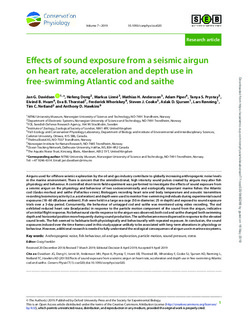| dc.contributor.author | Davidsen, Jan Grimsrud | |
| dc.contributor.author | Dong, Hefeng | |
| dc.contributor.author | Linne, Markus | |
| dc.contributor.author | Andersson, Mathias H. | |
| dc.contributor.author | Piper, Adam | |
| dc.contributor.author | Prystay, Tanya S. | |
| dc.contributor.author | Hvam, Eivind B. | |
| dc.contributor.author | Thorstad, Eva Bonsak | |
| dc.contributor.author | Whoriskey, Frederick G. | |
| dc.contributor.author | Cooke, Steven J. | |
| dc.contributor.author | Sjursen, Aslak Darre | |
| dc.contributor.author | Rønning, Lars | |
| dc.contributor.author | Netland, Tim Cato | |
| dc.contributor.author | Hawkins, Anthony D. | |
| dc.date.accessioned | 2019-05-20T10:31:37Z | |
| dc.date.available | 2019-05-20T10:31:37Z | |
| dc.date.created | 2019-04-08T15:14:48Z | |
| dc.date.issued | 2019 | |
| dc.identifier.citation | Conservation Physiology, Volume 7, Issue 1, 2019 | nb_NO |
| dc.identifier.issn | 2051-1434 | |
| dc.identifier.uri | http://hdl.handle.net/11250/2598001 | |
| dc.description.abstract | Recent vegetation changes in arctic-alpine tundra ecosystems may affect several ecosystem processes that regulate microbe and soil functions. Such changes can alter ecosystem carbon (C) cycling with positive feedback to the atmosphere if plant C uptake is less than the amount of soil C released. Here, we examine how differences in plant functional traits, microbial activity, and soil processes within and across Salix-dominated shrub, dwarf shrub–dominated heath, and herb- and cryptogam-dominated meadow communities influence C cycling. We develop a hypothesized framework based on a priori model selection of variation in daytime growing season gross ecosystem photosynthesis (GEP) and above- and belowground respiration. The fluxes were standardized to light and temperature.
Gross ecosystem photosynthesis was primarily related to soil moisture and secondarily to plant functional traits and aboveground biomass, and belowground respiration was dependent on the community weighted mean of specific leaf area (SLACWM). Similarly, microbial activity was linked with SLACWM and was highest in meadows, and carbon-degrading microbial activity decreased with vegetation woodiness. These results suggest that shrub expansion may influence summer C cycling differently depending on plant community, as belowground respiration might increase in the heath and decrease in the meadow communities. | nb_NO |
| dc.language.iso | eng | nb_NO |
| dc.rights | Navngivelse 4.0 Internasjonal | * |
| dc.rights.uri | http://creativecommons.org/licenses/by/4.0/deed.no | * |
| dc.title | Effects of sound exposure from a seismic airgun on heart rate, acceleration and depth use in free-swimming Atlantic cod and saithe | nb_NO |
| dc.type | Journal article | nb_NO |
| dc.type | Peer reviewed | nb_NO |
| dc.description.version | publishedVersion | nb_NO |
| dc.source.volume | 7 | nb_NO |
| dc.source.journal | Conservation Physiology | nb_NO |
| dc.source.issue | 1 | nb_NO |
| dc.identifier.doi | 10.1093/conphys/coz020 | |
| dc.identifier.cristin | 1690907 | |
| dc.description.localcode | © The Author(s) 2019. Published by Oxford University Press and the Society for Experimental Biology. This is an Open Access article distributed under the terms of the Creative Commons Attribution License (http://creativecommons.org/licenses/by/4.0/), which permits unrestricted reuse, distribution, and reproduction in any medium, provided the original work is properly cited. | nb_NO |
| cristin.unitcode | 194,31,10,0 | |
| cristin.unitcode | 194,63,35,0 | |
| cristin.unitname | Institutt for naturhistorie | |
| cristin.unitname | Institutt for elektroniske systemer | |
| cristin.ispublished | true | |
| cristin.fulltext | original | |
| cristin.qualitycode | 1 | |

